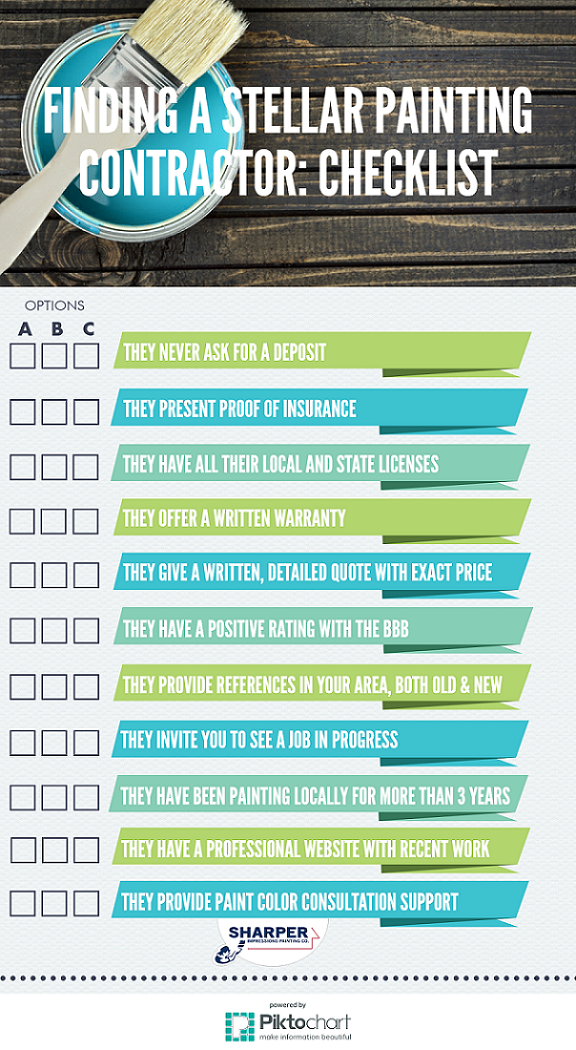Understand Exactly How Seasonal Conditions Affect The Success Of Commercial External Paint And Learn The Excellent Durations To Guarantee Resilient Outcomes For Your Job
Understand Exactly How Seasonal Conditions Affect The Success Of Commercial External Paint And Learn The Excellent Durations To Guarantee Resilient Outcomes For Your Job
Blog Article
Writer-Fox Rosendal
When you're preparing a commercial external paint project, seasonal elements can make or damage your results. You'll intend to consider how temperature and moisture effect paint application and drying out times. Selecting the ideal season can guarantee your paint sticks effectively and lasts much longer. But which periods are truly the very best for this type of job? Let's discover the key elements that can influence your job's success.
The Impact of Temperature Level on Paint Application
When you're intending a business outside paint project, the temperature level can substantially affect how well the paint adheres and dries out.
Ideally, you wish to repaint when temperature levels vary in between 50 ° F and 85 ° F. If it's as well chilly, the paint might not heal correctly, resulting in problems like peeling or fracturing.
On the other hand, if it's also warm, the paint can dry out also promptly, avoiding proper adhesion and causing an irregular coating.
You need to also consider the moment of day; morning or late afternoon provides cooler temperature levels, which can be extra favorable.
Always inspect the producer's recommendations for the particular paint you're using, as they typically supply support on the suitable temperature range for ideal outcomes.
Moisture and Its Impact on Drying Times
Temperature level isn't the only ecological factor that affects your industrial outside painting job; humidity plays a considerable role as well. High humidity levels can reduce drying times substantially, affecting the general quality of your paint work.
When the air is saturated with dampness, the paint takes longer to heal, which can cause issues like poor attachment and a higher danger of mold growth. If you're painting on a particularly damp day, be gotten ready for prolonged delay times between layers.
It's crucial to monitor neighborhood weather conditions and strategy appropriately. Preferably, aim for humidity degrees in between 40% and 70% for optimal drying out.
Maintaining visit the next website in mind guarantees your task stays on track and supplies a long-term finish.
Best Seasons for Commercial Outside Paint Projects
What's the very best time of year for your business exterior painting tasks?
Spring and very early loss are normally your best options. During these seasons, temperature levels are moderate, and moisture degrees are frequently reduced, producing optimal conditions for paint application and drying out.
Prevent summer's intense heat, which can cause paint to completely dry as well quickly, leading to inadequate bond and coating. Similarly, wintertime's cool temperatures can prevent appropriate drying and healing, running the risk of the longevity of your paint work.
Go for days with temperature levels between 50 ° F and 85 ° F for optimal outcomes. Remember to inspect the neighborhood weather forecast for rainfall, as damp problems can wreck your project.
Preparation around these variables guarantees your paint task runs efficiently and lasts much longer.
Final thought
To conclude, preparing your industrial exterior painting jobs around seasonal factors to consider can make a substantial difference in the end result. By scheduling work during the suitable temperatures and moisture degrees, you'll make certain better bond and drying times. Keep in mind to keep an eye on regional weather forecasts and pick the correct time of year-- springtime and early autumn are your best choices. Taking https://www.bobvila.com/articles/best-paints-for-wood-crafts/ will certainly aid you achieve a sturdy and expert surface that lasts.
